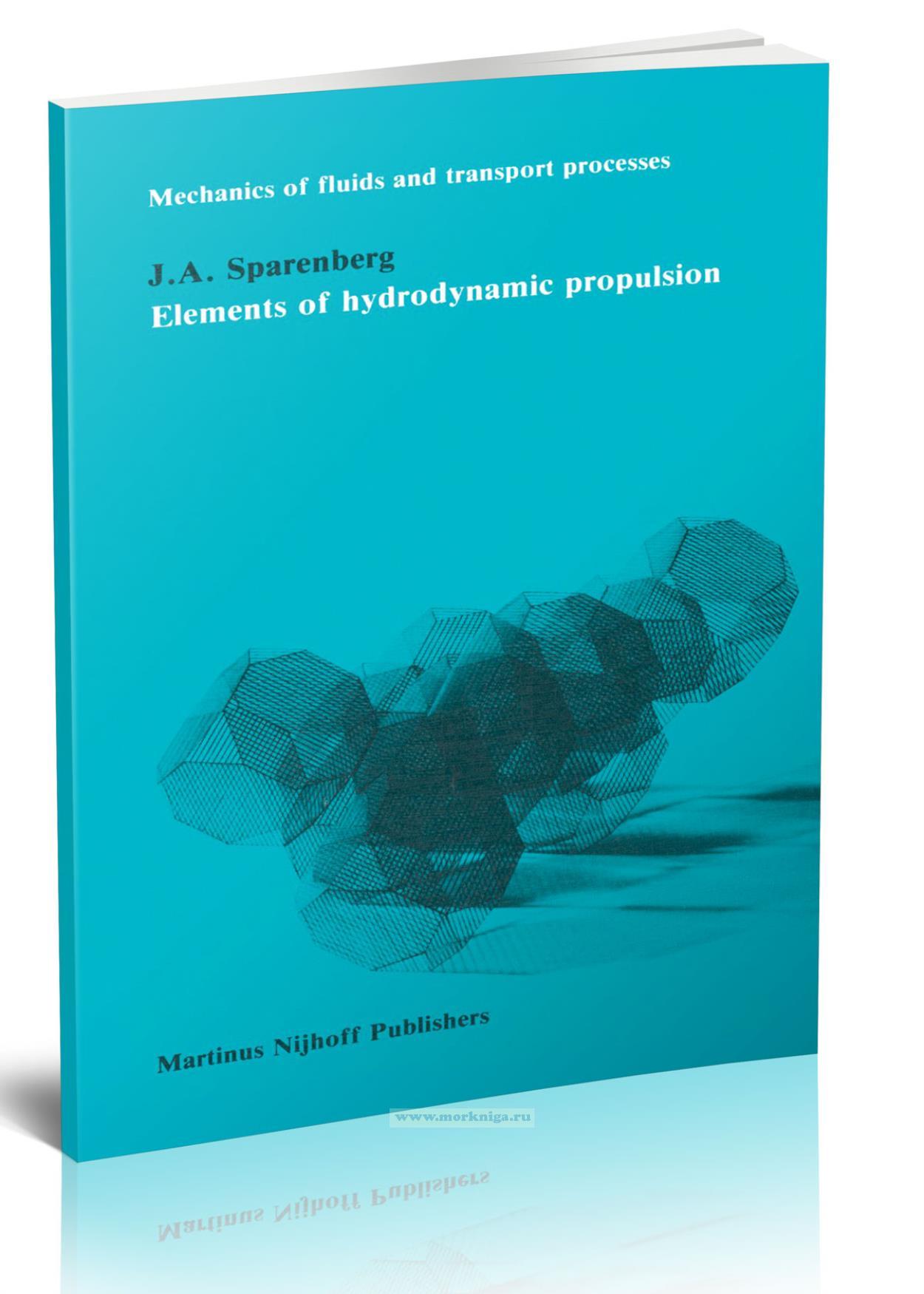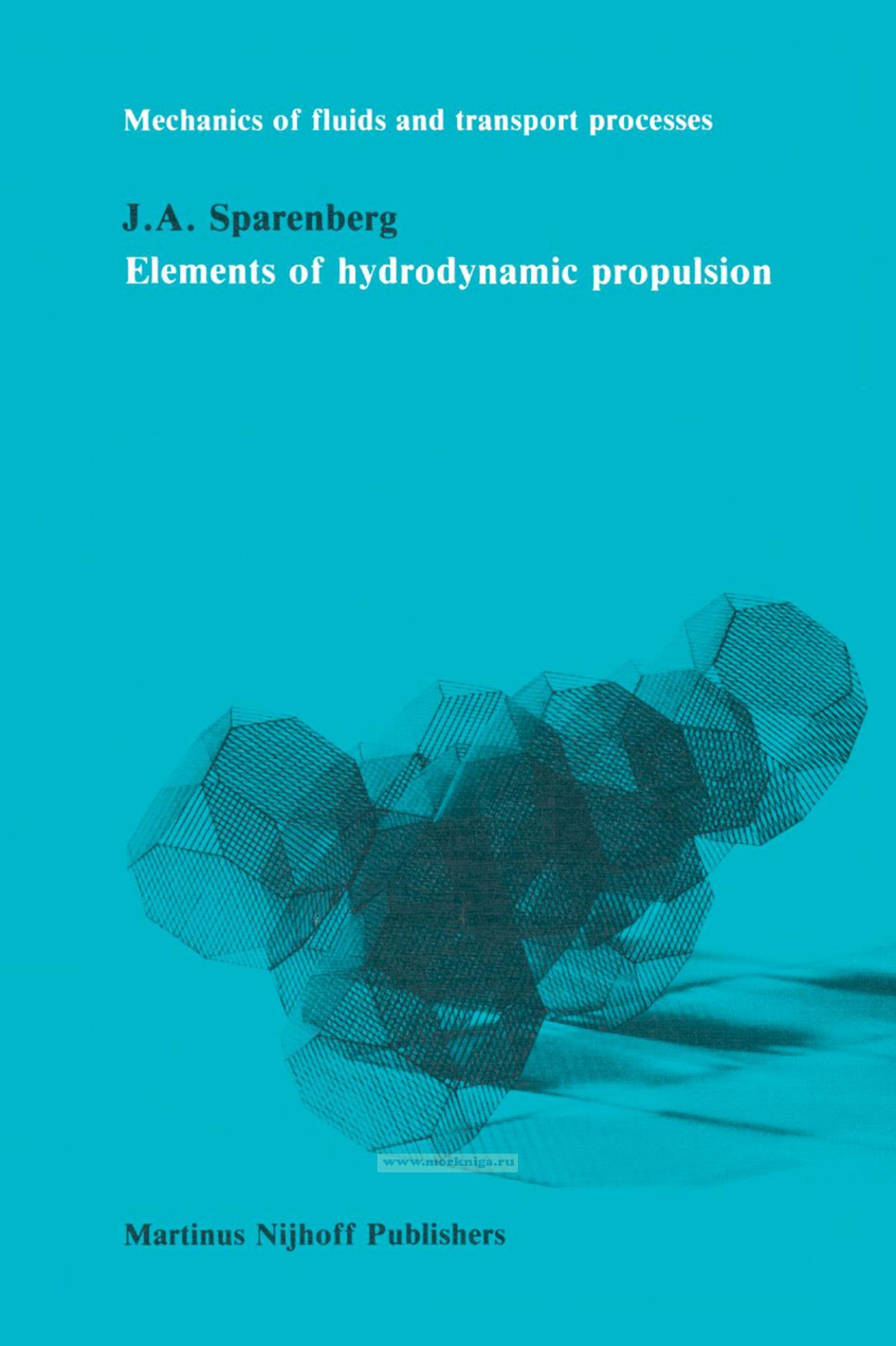Elements of hydrodynamic propulsion/Элементы гидродинамической тяги
Книга на английском языке
This is a treatment of a number of aspects of the theory of hydrodynamic propulsion. It has been written with in mind technical propulsion systems generally based on lift producing profiles. We assume the fluid, which is admitted in conventional hydrody namics, to be incompressible. Further we assume the occurring Reynolds numbers to be sufficiently high such that the inertia forces dominate by far the viscous forces, therefore we take the fluid to be inviscid. Of course it must be realized that viscosity plays an important part in a number of phenomena displayed in real flows, such as flow separation at the nose of a profile and the entrainment of fluid by a ship's hull. Another approximation which will be used in general is that the problems are linearized. In other words it is assumed that the induced disturbance velocities are sufficiently small, such that their squares can be neglected with respect to these velocities themselves. Hence it is necessary to evaluate the domain of validity of the results with respect to these two a priori assumptions. Anyhow it seems advisable to have first a good understanding of the linearized non-viscous theory before embarking on complicated theories which describe more or less realistic situations. For elaborations of the theory to realistic situations we will refer to current literature. In low Reynolds number flow, singular external forces and moments are very useful.
Contents
Preface
1. External force actions
1.1 Hydrodynamic forces on a moving body
1.2 Force actions and shed vorticity
1.3 External force fields and vorticity
1.4 Solution of linearized equation of motion
1.5 Vortex representation of solution
1.6 Singular force perpendicular to its velocity
1.7 Singular force in the direction of its velocity
1.8 Work done by external force field and moving body
1.9 Vorticity of a lifting surface, linearized theory
1.10 Bound vortex «ending» at a plate
1.11 Suction force at leading edge
2. The actuator surface
2.1 Linearized actuator surface theory
2.2 Actuator disk
2.3 Thrust deduction
2.4 Non linear actuator disk theory, 1
2.5 Non linear actuator disk theory, 2
2.6 Discussion of results and methods
3. The ship screw
3.1 The geometry of the ship screw
3.2 The screw blade with thickness and without load
3.3 The velocity field induced by rotating force
3.4 Screw blade of zero thickness, prescribed load, 1
3.5 Screw blade of zero thickness, prescribed load, 2
3.6 Some additional remarks
4. Unsteady propulsion
4.1 Some types of unsteady propulsion
4.2 Small amplitude propulsion, two dimensional
4.3 Solution of the Hilbert problem
4.4 Thrust and efficiency
4.5 Theoretical and experimental results
4.6 Elastically coupled profiles
4.7 The Voith-Schneider propeller
4.8 Large amplitude unsteady propulsion, rigid profile
4.9 Some additional remarks
5. Optimization theory
5.1 Lifting surface system
5.2 Energy extraction out of a disturbed fluid
5.3 The variational problem for lifting surface systems
5.4 Necessary condition for an optimum
5.5 Optimum wing in up- or downward flow
5.6 Classes of lifting surface systems, quality number
5.7 The ideal propeller
5.8 Comparison of the quality number of optimum propellers by inspection
5.9 Energy extraction, translating rigid wing
5.10 Optimum energy extraction by rigid wing
6. Applications of optimization theory
6.1 Optimum screw propeller with endplates
6.2 Properties of the potential
6.3 Circulation distribution, thrust
6.4 Efficiency and quality number
6.5 Numerical results
6.6 Optimization of the sails of a yacht
6.7 Numerical results
6.8 Optimum unsteady propulsion, large amplitude, two dimensional
6.9 Angles of incidence, large amplitude, two dimensional
6.10 Optimum large amplitude unsteady propulsion, finite span
6.11 On the optimum Voith-Schneider propeller
6.12 On the optimum large hub propeller
7. On the existence of optimum propellers
7.1 Small amplitude flexible profile
7.2 Nonexistence of optimum added motion
7.3 Large amplitude rigid profile
7.4 The wagging motion
7.5 Nonexistence of optimum base motion
7.6 Small amplitude heaving motion
7.7 The optimization problem
7.8 Existence of optimum added motion
7.9 Large amplitude propulsion flexible profile
Appendices
A. The Hilbert problem
A.l The formulas of Plemelj
A.2 The Hilbert problem for an arc
A. 3 Singular integral equations
B. Curvilinear coordinates
B. l Tensor representation of some operators
B.2 Two applications
References
Index

